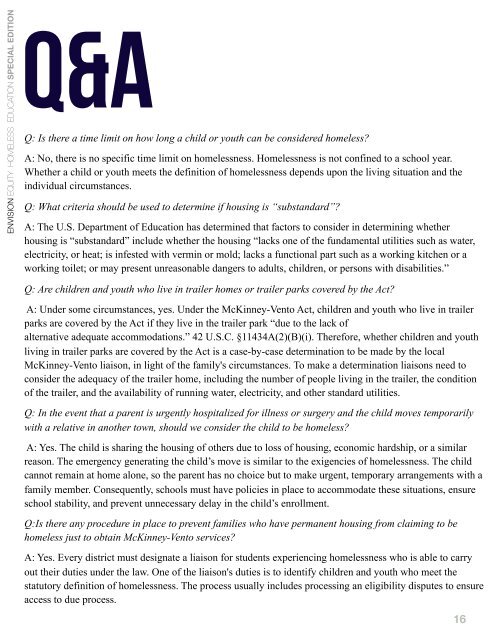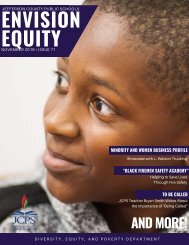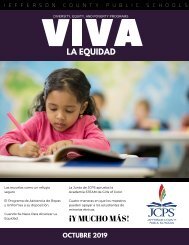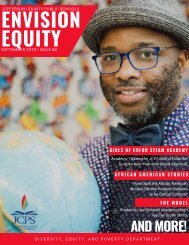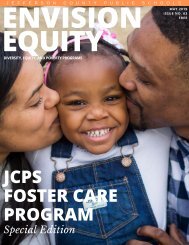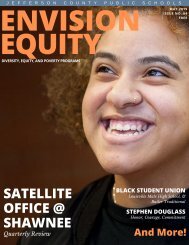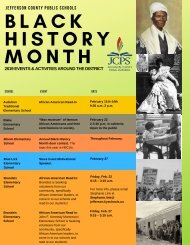2018 Homeless Edition
You also want an ePaper? Increase the reach of your titles
YUMPU automatically turns print PDFs into web optimized ePapers that Google loves.
ENVISION EQUITY HOMELESS EDUCATION SPECIAL EDITION<br />
Q&A<br />
Q: Is there a time limit on how long a child or youth can be considered homeless?<br />
A: No, there is no specific time limit on homelessness. <strong>Homeless</strong>ness is not confined to a school year.<br />
Whether a child or youth meets the definition of homelessness depends upon the living situation and the<br />
individual circumstances.<br />
Q: What criteria should be used to determine if housing is “substandard”?<br />
A: The U.S. Department of Education has determined that factors to consider in determining whether<br />
housing is “substandard” include whether the housing “lacks one of the fundamental utilities such as water,<br />
electricity, or heat; is infested with vermin or mold; lacks a functional part such as a working kitchen or a<br />
working toilet; or may present unreasonable dangers to adults, children, or persons with disabilities.”<br />
Q: Are children and youth who live in trailer homes or trailer parks covered by the Act?<br />
A: Under some circumstances, yes. Under the McKinney-Vento Act, children and youth who live in trailer<br />
parks are covered by the Act if they live in the trailer park “due to the lack of<br />
alternative adequate accommodations.” 42 U.S.C. §11434A(2)(B)(i). Therefore, whether children and youth<br />
living in trailer parks are covered by the Act is a case-by-case determination to be made by the local<br />
McKinney-Vento liaison, in light of the family's circumstances. To make a determination liaisons need to<br />
consider the adequacy of the trailer home, including the number of people living in the trailer, the condition<br />
of the trailer, and the availability of running water, electricity, and other standard utilities.<br />
Q: In the event that a parent is urgently hospitalized for illness or surgery and the child moves temporarily<br />
with a relative in another town, should we consider the child to be homeless?<br />
A: Yes. The child is sharing the housing of others due to loss of housing, economic hardship, or a similar<br />
reason. The emergency generating the child’s move is similar to the exigencies of homelessness. The child<br />
cannot remain at home alone, so the parent has no choice but to make urgent, temporary arrangements with a<br />
family member. Consequently, schools must have policies in place to accommodate these situations, ensure<br />
school stability, and prevent unnecessary delay in the child’s enrollment.<br />
Q:Is there any procedure in place to prevent families who have permanent housing from claiming to be<br />
homeless just to obtain McKinney-Vento services?<br />
A: Yes. Every district must designate a liaison for students experiencing homelessness who is able to carry<br />
out their duties under the law. One of the liaison's duties is to identify children and youth who meet the<br />
statutory definition of homelessness. The process usually includes processing an eligibility disputes to ensure<br />
access to due process.<br />
Above, a JCPS student is welcomed by<br />
Flash Dads at Wheatley Elementary<br />
16


